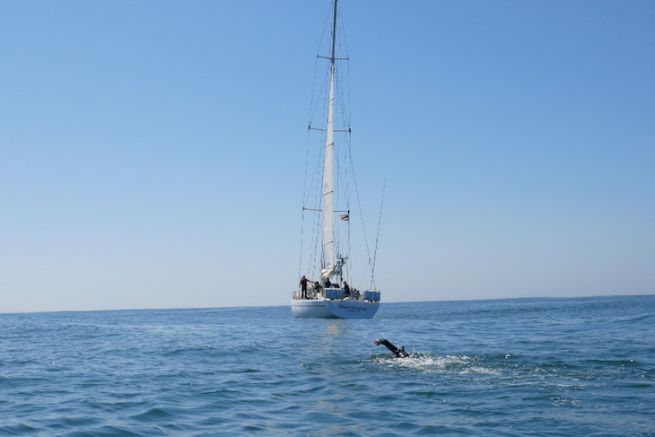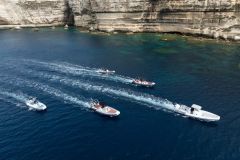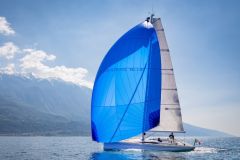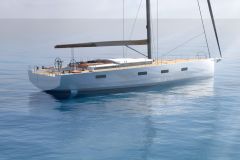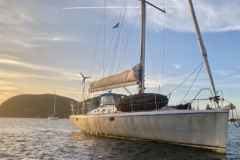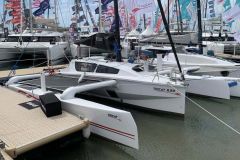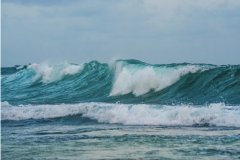Benoit Lecomte set out on June 5, 2018 from San Francisco to swim 5,500 miles to Tokyo. A crazy bet for this Frenchman who has been living in the United States for 25 years and who prepared for 7 years for this new crossing. This is not his first attempt, as in 1998 he became the first man to swim across the Atlantic. If the first time, he wanted to pay tribute to his father and raise funds for cancer research, this 2 e attempt will be to the benefit of the ocean.
With his crew - he will be accompanied on his crossing by the sailboat Discover - they will collect data on the ocean and in particular on plastic pollution. 14 research projects conducted by 27 scientific institutions are associated with The Longest Swim.

The 51-year-old Frenchman - naturalized American - will swim 8 hours a day (about 30 miles) and expects to arrive in 6 to 8 months, depending on the sea currents, and will spend 180 days offshore. Escorted by the sailboat Discover, he will be able to eat and rest there before resuming his journey each day.

For this crossing, the swimmer will be equipped with a neoprene wetsuit, mask, fins, snorkel and goggles. But also a bracelet to repel sharks. He will burn 8,000 calories every day, but the sailboat will have the necessary supplies to ensure all the morning and evening meals: 2.1 tons of food.
Benoit Lecomte will cross the northern part of the "plastic continent" - a floating dump in the Pacific Ocean that is 3 times bigger than France. The Longest Swim team will take samples throughout the crossing to make a database and will install beacons on the largest debris to track their trajectory.
